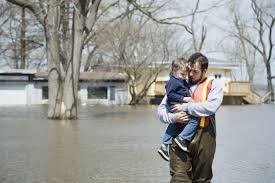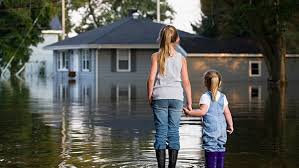Many homeowners assume they don’t need flood insurance if they don’t live in a high-risk flood zone. But 25% of all flood claims come from moderate-to-low risk areas, and just 1 inch of water can cause $25,000 in damage.
-
Why you might need flood insurance even outside flood zones
-
How NFIP and private flood insurance work
-
Real-life examples of “surprise” flooding
-
Cost comparisons for low-risk areas
-
How to get the best coverage
Do You Need Flood Insurance Outside a Flood Zone?
5 Reasons Low-Risk Doesn’t Mean No-Risk
-
Changing weather patterns – More intense storms increase flood risk everywhere
-
Construction/development – New buildings and roads alter drainage
-
Levee or dam failures – Even areas miles away can flood
-
Sewer backups – Heavy rain overwhelms drainage systems
-
“Flash flood” surprises – Dry regions can flood suddenly
Real-Life Example:
In 2021, 75% of Tennessee flood victims had no flood insurance—even though many lived outside FEMA’s high-risk zones.
How Flood Insurance Works in Low-Risk Areas
Option 1: National Flood Insurance Program (NFIP)
-
Available to all homeowners, even in low-risk zones
-
Max coverage:
-
$250,000 for dwelling
-
$100,000 for belongings
-
-
Waiting period: 30 days (no last-minute purchases)
Pros:
Backed by FEMA (reliable payouts)
Standardized pricing
Cons:
Doesn’t cover basement improvements
Limited additional living expenses

Option 2: Private Flood Insurance
-
Often cheaper than NFIP in low-risk areas
-
Higher coverage limits (e.g., $1M+ for homes)
-
Faster approval (some with no waiting period)
Top Providers:
-
Neptune Flood (instant online quotes)
-
FloodSimple (good for moderate-risk zones)
-
Aon Edge (high-value homes)
Cost of Flood Insurance in Non-Flood Zones
| Policy Type | Average Annual Cost (Low-Risk Zone) |
|---|---|
| NFIP Preferred Risk Policy | $400–$700 |
| Private Flood Insurance | $300–$600 |
| Excess Flood Coverage | $1,000+ (for high-value homes) |
Factors That Lower Costs:
-
Elevated foundation
-
Distance from water
-
Community floodplain management
What Flood Insurance Covers (And Doesn’t)
Covered
-
Storm surge
-
Mudflows (from flooding)
-
Sewer backup (if caused by flooding)
Not Covered
-
Mold/moisture damage (from unresolved leaks)
-
Landscaping damage
-
Financial losses from business interruptions
3 Times Flood Insurance Saved Homeowners
-
Arizona Desert Home
-
No flood zone → Flash flood caused $40K in damage
-
NFIP paid for repairs
-
-
Tennessee Suburb
-
Moderate-risk zone → Storm overwhelmed drains
-
Private flood insurance covered $75K in damages
-
-
California Drought Area
-
Low-risk for decades → Atmospheric river caused flooding
-
Excess flood policy paid $200K+
-
How to Buy Flood Insurance in a Non-Flood Zone
Step 1: Check Your Real Risk
-
Use FEMA’s Flood Map Service Center
-
Ask insurers for a risk assessment
Step 2: Compare NFIP vs. Private
-
NFIP: Better for basic, guaranteed coverage
-
Private: Cheaper for low-risk, faster claims
Step 3: Apply Early
-
NFIP: 30-day wait
-
Private: Some cover immediately
Final Verdict: Is It Worth It?
Buy flood insurance if:
-
You’re in a changing climate area
-
Your mortgage lender requires it
-
You can’t afford $20K+ in repairs

Skip if:
-
You’re in a very arid region with no flood history
-
You have enough savings to self-insure
Pro Tip: Even renters in low-risk zones should consider flood insurance for belongings ($100/year).
Did you experience “unexpected” flooding? Share your story below!





